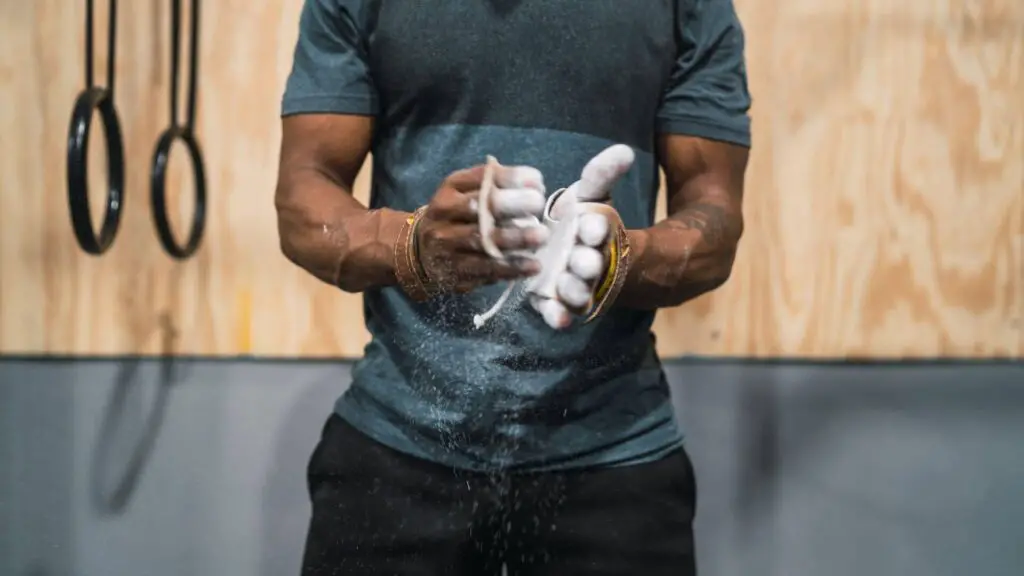If you are a weight lifter, then you know how important it is to have the right equipment. If you’re lifting weights, then you should know the importance of using chalk. It can help improve your grip, which can lead to better performance and fewer injuries. But with so many different types of weightlifting chalk on the market, it can be hard to know which product is right for you. This guide will help make the process a little easier, so you can find the perfect chalk for your needs. That is why we created this guide to help you choose the best weight lifting chalk for your needs.
What Is Weight Lifting Chalk And Its Purpose?
Weightlifting chalk is a type of powdered chalk that is used to help improve grip when lifting weights. It is commonly used in weightlifting, rock climbing, and other activities that require a strong grip.
The purpose of weightlifting chalk is to absorb moisture from the skin, which can improve grip and prevent slips and accidents when lifting weights. It is often used in conjunction with other grip-enhancing tools such as lifting straps or grip pads.
Weightlifting chalk is applied to the hands, fingers, or other parts of the body that come into contact with the weights or other equipment. It is typically applied in small amounts and wiped off after use to avoid creating a mess in the gym.
While weightlifting chalk can be a helpful tool for improving grip, it is important to use it in moderation and to follow proper application techniques. Overuse of chalk can create a mess in the gym and may not provide any additional benefits. It is also a good idea to clean up any excess chalk after use to keep the gym clean and safe for others.
What is weightlifting chalk made of?
Weightlifting chalk is typically made of magnesium carbonate, which is a type of chalk that is commonly used in weightlifting and other activities that require a strong grip. Magnesium carbonate is a naturally occurring mineral that is mined from the earth and then ground into a fine powder. It is known for its ability to absorb moisture from the skin, which can improve grip and prevent slips and accidents when lifting weights.
Some weightlifting chalks may also contain other ingredients, such as fillers or binding agents, to help improve the texture or consistency of the chalk. However, pure magnesium carbonate is generally considered to be the most effective type of weightlifting chalk, as it provides a strong, dry grip and does not leave a residue on the skin or equipment.
benefits of using weightlifting chalk?
Here are some benefits of using weightlifting chalk:
- Improved grip: Weightlifting chalk helps to absorb moisture from the skin, which can improve grip and prevent slips and accidents when lifting weights.
- Enhanced performance: A better grip can help you to lift more weight or perform more repetitions, which can lead to improved strength and muscle development.
- Increased safety: By helping to prevent slips and accidents, weightlifting chalk can help to reduce the risk of injury when lifting weights.
- Convenient to use: Weightlifting chalk comes in a convenient form that is easy to apply and remove, making it a convenient tool for improving grip in the gym.
How TO USE weightlifting chalk PROPERLY?
Here are some tips for using weightlifting chalk properly:
- Apply only to the areas of the body where it is needed: Weightlifting chalk should only be applied to the hands, fingers, or other parts of the body that come into contact with the weights or other equipment. Avoid applying it to the entire body or to areas that do not come into contact with the weights.
- Use only a small amount: Weightlifting chalk should be used in moderation to avoid creating a mess in the gym. A small amount of chalk is typically sufficient to improve grip.
- Wipe off excess chalk: After applying weightlifting chalk, it is important to wipe off any excess to avoid creating a mess in the gym. Use a towel or cloth to wipe off excess chalk from the hands and other areas of the body.
- Clean up any excess chalk: It is important to clean up any excess chalk after use to keep the gym clean and safe for others. Use a broom or dustpan to sweep up any loose chalk, and be sure to dispose of it properly.
- Follow the manufacturer’s instructions: It is always a good idea to follow the manufacturer’s instructions for use when using weightlifting chalk. These instructions may include information on how to apply and remove the chalk, as well as any precautions or warnings.
By following these tips, you can use weightlifting chalk effectively and safely to help improve grip and reduce the risk of slips and accidents when lifting weights.
Tips On How To Store Your Weight Lifting Chalk Safely In The Gym
Here are some tips for storing weightlifting chalk safely in the gym:
- Keep it in a dry, secure location: Weightlifting chalk should be stored in a dry, secure location to prevent it from getting wet or spilling. A lockable storage cabinet or closet is a good option, as is a resealable container or bag.
- Avoid storing it near heat sources: Weightlifting chalk should not be stored near heat sources such as radiators, hot water heaters, or other appliances that generate heat. This can cause the chalk to become soft or mushy, which can make it difficult to use.
- Keep it away from children and pets: Weightlifting chalk is not toxic, but it can be a choking hazard if ingested. It is important to keep it out of reach of children and pets to prevent accidental ingestion.
- Label it clearly: If you are storing weightlifting chalk in a shared gym space, it is a good idea to label it clearly to prevent confusion or misunderstandings. This can help to ensure that the chalk is used properly and that it is returned to its proper storage location after use.
By following these tips, you can help to ensure that your weightlifting chalk is stored safely and securely in the gym, reducing the risk of accidents or mishaps.
Related: Is gym chalk edible?
best weightlifting chalk with detailed overview
Here are the best weightlifting chalks available:
Friction Labs Unicorn Dust:
Friction Labs Unicorn Dust is a type of weightlifting chalk that is known for its ability to provide a strong, long-lasting grip. It is made from a blend of magnesium carbonate and other high-quality ingredients
One of the notable features of Friction Labs Unicorn Dust is that it is formulated to be less abrasive than other types of weightlifting chalk. This can make it more comfortable to use and less likely to cause irritation or dryness on the skin. It is also designed to be less messy than other types of chalk, making it a good choice for use in commercial or home gyms.
Primo chalk 1lb
Primo Chalk is a brand of weightlifting chalk that is designed to provide a strong, dry grip for weightlifting and other activities. The Primo Chalk 1 LB Bucket is a bulk size option that contains one pound of weightlifting chalk, making it a good choice for those who use a lot of chalk or who want to stock up on a supply.
Primo Chalk is made from pure magnesium carbonate, which is a type of chalk that is commonly used in weightlifting and other activities because of its ability to provide a strong, dry grip. The chalk comes in a convenient bucket with a resealable lid, making it easy to store and use as needed.
Rogue Gym Chalk
Rogue Gym Chalk is a type of weightlifting chalk that is designed for use in commercial and home gyms. It is made from 100% pure magnesium carbonate, which is a type of chalk that is commonly used in weightlifting and other activities because of its ability to provide a strong, dry grip.
One of the notable features of Rogue Gym Chalk is that it comes in a block form, rather than as a powder. This makes it easy to apply and helps to reduce the amount of mess that is typically associated with powdered chalk. The chalk is also packaged in a convenient resealable bag for easy storage.
However, it is important to note that different people may have different preferences when it comes to weightlifting chalk, and what works well for one person may not work as well for another. It is always a good idea to try out a few different types of chalk and see which one works best for you.
Final Thoughts
It is important to note that weightlifting chalk should be used in moderation and applied only to the areas of the body where it is needed. Overuse of chalk can create a mess in the gym and may not provide any additional benefits. It is also a good idea to follow proper application techniques and to clean up any excess chalk after use to keep the gym clean and safe for others. Also, chalk is available in various types and brands, so it’s important to find one that works best for you.

